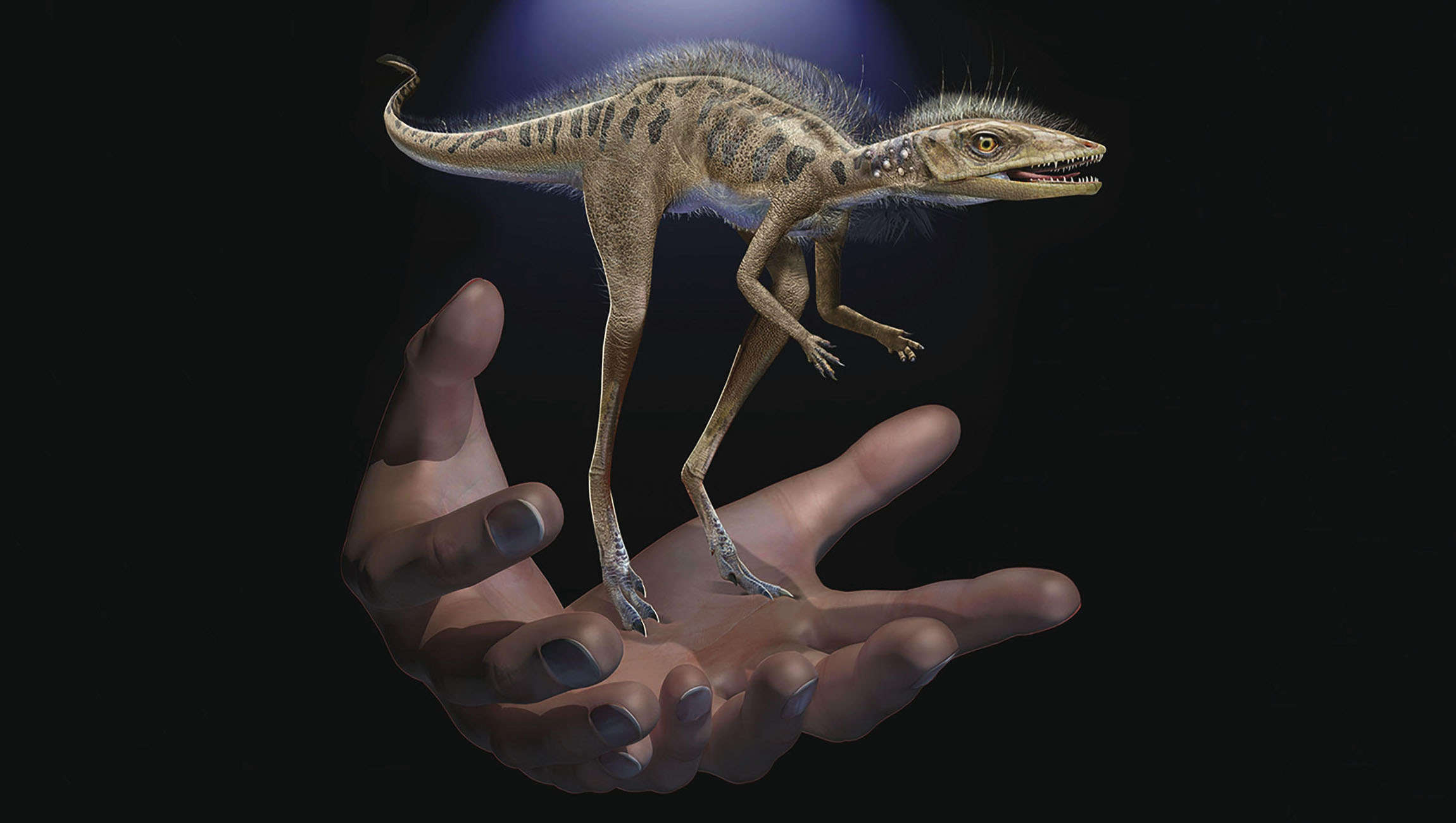Create a free profile to get unlimited access to exclusive videos, sweepstakes, and more!
Tiny dinosaur that could fit into your hand might be proof that even the most monstrous lizards evolved from tiny terrors

There was a time when the thunderous footsteps of dinosaurs shook the earth as pterosaurs with monster wingspans soared through the skies, but even these behemoths evolved from something much less impressive.
Kongonaphon kely could fit in the palm of your hand—not much of a dinosaur. With a name that translates to “tiny bug slayer,” this voracious little lizard crunched through hard-shelled insects before things like T. rex were ever terrorizing their prey. It emerged from a pile of Early Triassic bones from Madagascar, and is now believed to have been a precursor of Ornithodirans like dinosaurs and pterosaurs, and close to the divergence of beasts that would trample land and those that would take to the sky.
Buffy the Bug Slayer may be proof that such massive creatures evolved from small insectivores around 237 million years ago.
“Analysis of ancestral body size indicates that there was a pronounced miniaturization event near the common ancestor of dinosaurs and pterosaurs,” said John Flynn of the American Museum of Natural History, who recently led a study published in PNAS. “Tiny ancestral body size may help explain the origins of flight in pterosaurs and fuzzy integument in both groups.”
The partial skeleton of K. kely revealed it as an early ornithodiran and one of the smallest nonavian ornithodirans ever, at barely 4 inches long. It is also the sixth known member of Triassic subgroup Lagerpetidae, considered to be some of the earliest reptiles to diverge into dinosaurs and pterosaurs, and was distinguished from its brethren by its unique skeletal morphology. It had conical and unserrated teeth that showed the type of wear typical of an insectivore that would feast on bugs with tough shells. Ornithodirans so far back in the fossil record have been difficult to find because their fragile skeletons became lost to time.
The K. kely specimen found was definitely not a juvenile. It is possible that other individuals and other lagerpetids reached a slightly larger adult size, and there could be more fossils out there that have still gone undiscovered.
Mesozoic reptiles are pretty much the poster children of dinosaurs. They were not only the largest animals ever to stomp on land, with an average body mass that makes the blue whale look like a sardine, but also the largest ever to fly. How animals this immense were able to stay airborne is so impressive to scientists that the mechanics of pterosaur flight are now inspiring the airplanes of the future. Their imposing presence cannot hide that they still have murky origins before the size explosion in the Late Triassic, and it doesn’t help that the fossils of their earliest ancestors are nearly impossible to find.
What scientists do know is that small ornithordirans like K. kely only appeared after other insectivores were wiped out by the end-Permian mass extinction. They probably filled an ecological niche that had suddenly opened up, hunting food that wasn’t on anything else’s menu and turning into a form of prehistoric pest control.
Despite the mysteries associated with K. kely and its relatives, there are some things that Flynn and his team have still been able to infer about their connection to the later dinosaurs and pterosaurs.
“Since miniaturization appears to be a necessary precursor to the development of flight in vertebrates, the origin of pterosaurs, the first vertebrates capable of powered flight, is likely related to their ancestry among already-small-bodied early ornithodirans,” he said, adding that “small-bodied early ornithodirans would also explain the bipedal ancestry of Triassic dinosaurs.”
Something else evolved with these ornithodirans. Pterosaurs and many dinosaurs that walked on land were covered in a sort of fuzz. It is now thought to have originated from reptiles like K. kely, whose diminiutive size made it difficult for them to regulate their body temperature during the extreme spikes of heat and cold the Triassic period experienced. They developed this fuzzy covering as insulation that was passed on to dinosaurs and pterosaurs. While dinosaurs were obviously unrelated to mammals, the fuzz evolution in ornithodirans may explain how fur evolved in mammalian ancestors.
Sure, K. kely could have fit in your hand, but would the bug-ivore find your fingers tasty? Probably.














